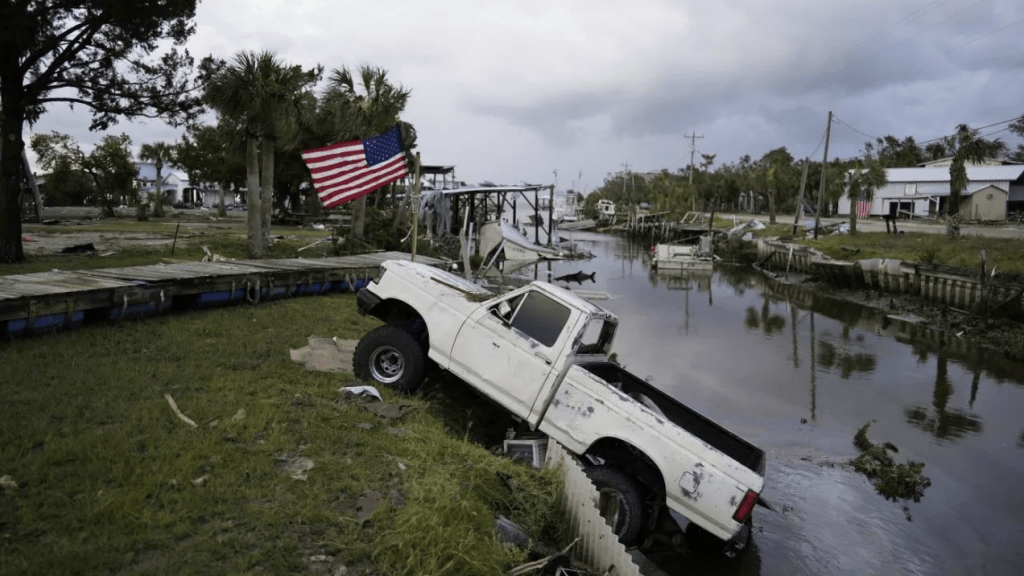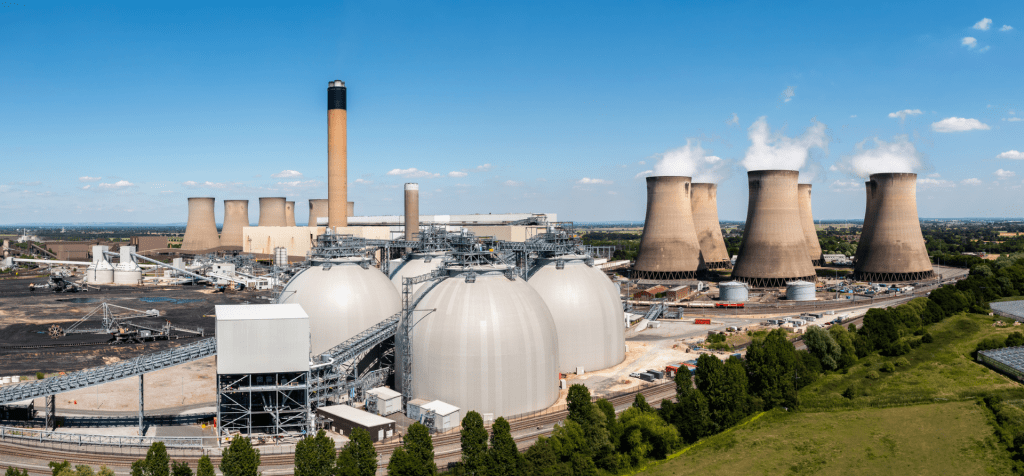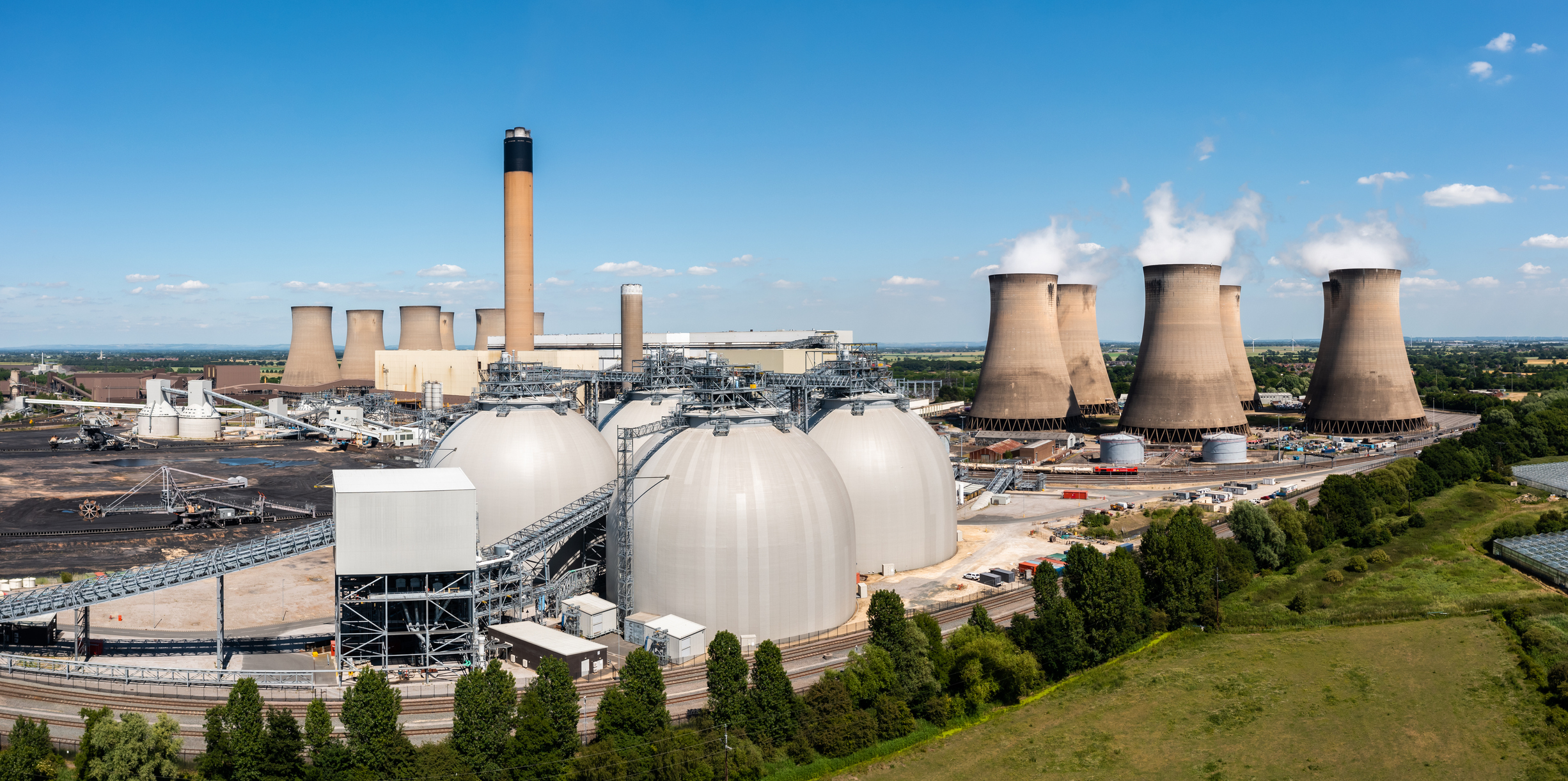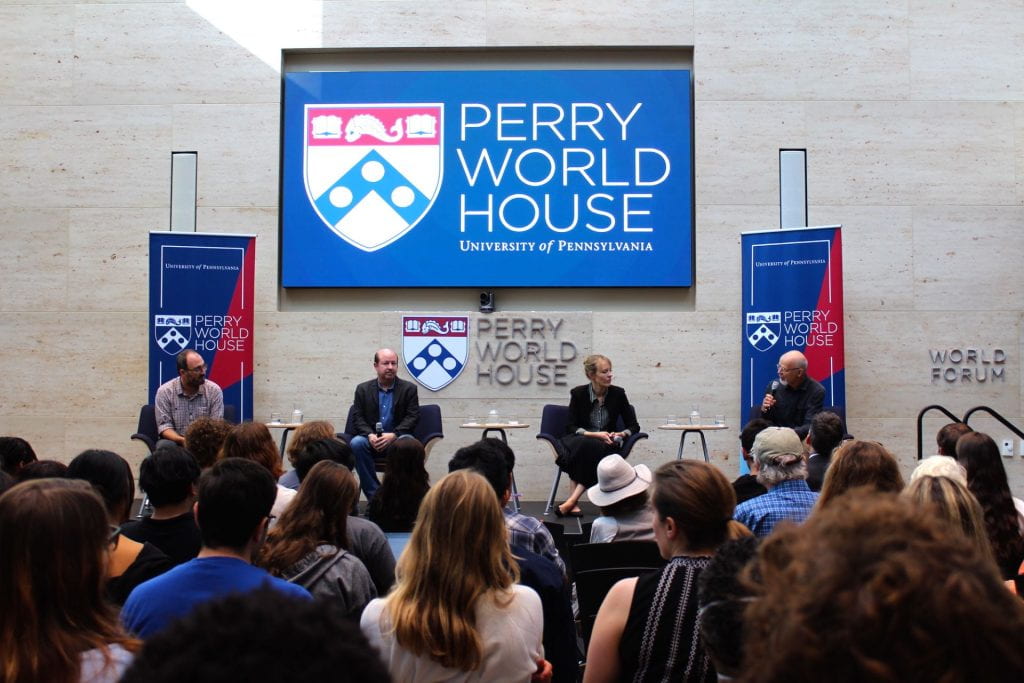The UN’s World Food Programme (WFP), meanwhile, spent roughly $100,000 in 2021 on nearly 29,000 credits issued by Brazil’s Teles Pires hydropower plant – a project accused of destroying forests and Indigenous lands, and of harming biodiversity and fisheries.
The companies involved blew up the Sete Quedas rapids with dynamite in 2013, two years before the project began issuing carbon credits.
“Teles Pires flooded the Sete Quedas rapids, which are the holiest site for the Munduruku people. It’s where the spirits of the respected elders go after they die,” said Philip Fearnside, a biologist at the National Institute for Research in Amazonia.
The project has also been linked to greenhouse gas emissions that undermine its offsetting claims.
A 2018 study published by the Federal University of Minas Gerais in Brazil calculated that deforestation and decomposition of flooded forests caused by the dam would add more than 60 million metric tonnes of carbon dioxide to the atmosphere – more than double the amount it claims to reduce through the sale of carbon credits.
Neither WFP nor the Brazilian energy companies EQAO and Hidrelétrica Teles Pires, which the UN lists as the two participants in the project, responded to requests for comment.
‘Randomly assigned’
More than 1 million credits in the UN’s portfolio were issued by large-scale hydropower projects, which experts have criticised for decades for being particularly ineffective at reducing greenhouse gases in the atmosphere.
When asked about these purchases, multiple UN entities either did not respond or deferred responsibility to UNFCCC.
Most UN entities rely on UNFCCC to procure offset credits on their behalf – a reliance that raises questions about what responsibility, if any, UN entities have in conducting their own due diligence when vetting and buying carbon credits.
“The [UN] Secretariat does not choose the projects,” said UN Secretariat spokesperson Florencia Soto Niño. “These are allocated through UNFCCC and they have certain criteria for their selection. I suggest you reach out to UNFCCC on this matter.”
UN officials told The New Humanitarian and Mongabay that most UN entities outsource the procurement of carbon credits to UNFCCC, which in turn buys them from the Adaptation Fund.
The Adaptation Fund receives credits from the Clean Development Mechanism (CDM), a UN-run offset certifier, and sells them to fund projects in countries trying to mitigate the adverse effects of climate change.
Moses Osani, a spokesperson for the UN Environment Programme (UNEP), said the credits are “randomly assigned” by the Adaptation Fund to UNFCCC and then assigned again by UNFCCC to the purchasing UN entities.
Eighteen UN entities initially told The New Humanitarian and Mongabay they didn’t know which projects issued their credits, though most eventually requested records from UNFCCC and shared them with reporters.
“We do not have info ourselves about the specific projects where the money [was] invested,” said Marina Maiero, Technical Officer for Climate Change and Health at the World Health Organization, which did not provide transaction records to reporters.*
In theory, each carbon credit certified by the CDM should represent the reduction of one metric tonne of carbon dioxide in the atmosphere.
In practice, however, the CDM has registered thousands of projects that experts say do not reduce emissions as advertised.
A 2016 research paper published by the Germany-based Öko-Institut recommended that large-scale wind and hydropower projects be excluded from the CDM because of quality concerns.
A 2022 review of the CDM’s performance similarly pointed out that few wind and hydropower projects – large-scale or small-scale – achieved their emission reduction targets.
Gold Standard and Verra – two other major carbon offset certifiers – restricted hydropower projects in 2019 due to “non-additionality”, meaning the projects didn’t need revenue from carbon credits to be built.
“If the money that you spend for the offset doesn’t have an impact on the outcome, then you can’t claim any credit for the outcome,” said Romm, the University of Pennsylvania climate researcher. “I don’t know why the UN would still be buying wind and hydro.”
Two UN officials told reporters there were limits on UN purchases of large-scale hydropower credits.
Osani, the UNEP spokesperson, said the mix of credits offered by the Adaptation Fund “excludes large-scale hydro” credits.
Dragoslav Jovanovic, head of the Procurement, Travel and General Services Unit at UNFCCC, said “certain large hydro” projects are meant to be excluded from what the Adaptation Fund can sell.
While some of the 1 million large-scale hydropower credits in the UN’s portfolio were purchased from other carbon credit markets, almost 900,000 were assigned to UN entities by UNFCCC, according to records UNFCCC and other entities provided, suggesting that unless they were using a different threshold, the exclusion was either being ignored or non-existent.
When asked whether large hydropower projects were meant to be excluded from UN purchases, Adaptation Fund spokesperson Matthew Pueschel declined to provide information, saying “all such transactions are proprietary”. He later added that all credits sold by the Adaptation Fund “are available for purchase in principle”.
Neither Osani nor Jovanovic responded to further questions on why almost 900,000 credits from large-scale hydropower projects were not excluded from UN purchases.
UNFCCC’s press office confirmed that “certain large hydro” projects were previously excluded from the Adaptation Fund’s credits but said “this criterion no longer applies”. They did not provide details on the threshold for exclusion or say when it was dropped.
This investigation found that UN entities purchased carbon credits from large-scale hydropower projects every year from 2014 to 2021.
Low ratings
While some experts questioned the effectiveness of the wind and hydropower credits in the UN’s portfolio generally, The New Humanitarian and Mongabay sought additional analysis from the London-based carbon credit ratings agency BeZero Carbon.
BeZero provides risk-based ratings, research, and analysis on carbon credits. Although it doesn’t specifically rate credits associated with UN entities, BeZero granted reporters access to its ratings platform to see its analysis of 23 projects that happen to be found in the UN’s portfolio.
Out of almost 300,000 credits the UN bought from these 23 projects, more than 60% were issued by projects that, according to BeZero, have a moderately low, low, or very low likelihood of achieving their stated greenhouse gas reductions.
UN entities spent almost $750,000 on these lowly rated projects. Wind and hydropower projects are among the lowest-rated.
For instance, BeZero gave a low rating to the Allain Duhangan Hydroelectric Project – an Indian dam that provided more than 39,000 credits to the UN Secretariat in 2021.
According to BeZero’s analysis, the preponderance of hydropower in the same region as the Allain Duhangan project “contrasts with the project’s claim to be first of its kind”, suggesting it would likely have been built regardless of revenue from carbon credits.
BeZero also gave low ratings to three Chinese wind power projects that supplied more than 24,000 credits to the UN Secretariat, WFP, and the UN Development Programme (UNDP).
All three ratings point out that wind power projects are financially viable on their own and are supported by governments, meaning they do not rely on carbon credit revenue and are therefore unlikely to be additional.
UNDP sustainability coordinator Anne Fernqvist told The New Humanitarian and Mongabay that BeZero’s ratings are statements of opinion, adding that UNDP’s climate neutrality claim remains valid even without credits from the lowly rated Chinese wind project.
Soto Niño, the UN Secretariat spokesperson, deferred questions about the Secretariat’s purchases to UNFCCC, which did not respond to questions about specific projects.
WFP did not respond to requests for comment on its purchases.
Buyer beware
Several experts who reviewed the UN’s offset portfolio suggested the UN could have avoided the most common risks associated with carbon credits by selecting project types that are known to offer additionality and don’t come with unintended problems.
More than half the credits reporters managed to trace in the UN’s portfolio, however, were issued by projects categorised as high-risk by the Carbon Offset Guide, indicating that they are among the least likely to have a meaningful climate impact.
The guide, published in 2019 by the Greenhouse Gas Management Institute, a Washington DC-based NGO that provides education on greenhouse gas accounting, categorises project types as low, medium, or high-risk, with low-risk project types being the most likely to be additional.
The New Humanitarian and Mongabay found that 51% of the credits in the records the UN provided were issued by high-risk projects, while only 25% were issued by low-risk projects, and another 24% were issued by medium-risk projects.
“The approach of a sensible [organisation] should be to check – what type of credits am I buying?” said Axel Michaelowa, a climate policy researcher at the University of Zurich and senior founding partner of the Perspectives Climate Group consulting firm.
Michaelowa also pointed out that the UN purchased small numbers of credits from hundreds of different projects rather than making large purchases from a small number of reputable projects, indicating that it wasn’t being selective.
“This is a clear indication that there is low quality control,” he told The New Humanitarian and Mongabay in a phone interview.
Dufrasne, of Carbon Market Watch, said that in addition to conducting more due diligence before buying credits, the UN should also stop claiming to be climate neutral.
“Where it becomes problematic is if those [offset] purchases create a licence to communicate false statements, such as ‘climate neutrality’,” he told The New Humanitarian and Mongabay.
Romm, the University of Pennsylvania climate researcher, told The New Humanitarian and Mongabay in a phone interview: “It’d be better if the UN simply said: ‘We’re going to try to do what our own expert group said’,” referring to recommendations that offsets should not be used to claim reductions in an organisation’s emissions.
Romm added that low-cost carbon credits, such as those sold by the CDM, tend also to be low-quality. Other climate experts say higher-cost credits are often associated with projects that have better environmental, social, and economic results.
Carbon credits can sell for more than $100 each, with common prices between 2021 and 2023 ranging from $2 to $15.
The UN spent an average of about $1.30 on each of the credits it disclosed to reporters. WFP bought more than half its credits – 500,000 – for just 12 euro cents each, while UNFCCC bought nearly 60,000 for 12 US dollar cents each, according to records provided.
“Anything that’s in the $3 to $4 price range… you get what you pay for. The reason [CDM credits] are cheap is because they’re not genuine,” Romm said.
As scrutiny of offsetting practices intensifies, some organisations have stopped buying carbon credits altogether and are instead investing in reducing their emissions directly.
Last year, the UK-based airline EasyJet announced it would not buy offset credits as part of its latest plan to reduce emissions. The plan instead focuses on using more sustainable fuel and more efficient planes. A 2021 joint investigation by The Guardian and Greenpeace revealed that the airline had been purchasing flawed carbon credits.
Victorine Che Thoener, senior strategic adviser at Greenpeace International, told The New Humanitarian and Mongabay that buying offset credits gives the false impression that governments, organisations, and consumers can buy their way out of the climate crisis without cutting their own emissions.
Theoner added: “Without truly functional climate procedures, the UNFCCC’s legitimacy is at risk – as is a liveable climate for us all.”
(* An earlier version of this article misstated the job title of Marina Maiero at the World Health Organization. This corrected version was published on 13 September 2023.)
Jacob Goldberg reported from Thailand and Léopold Salzenstein reported from France. Sarah Brown reported from Brazil and Shaz Syed from India. Graphics and illustrations by Eva Hilhorst, Marc Fehr, Léopold Salzenstein, and Sofia Kuan. Additional reporting and editing by Paisley Dodds in London.











